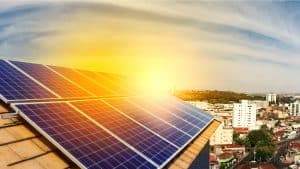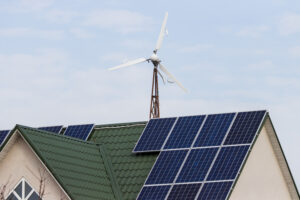Everything New Homeowners Need to Know About Renewable Energy
by Jane Marsh
With household bills increasing yearly, many homeowners are looking for ways to lower living costs. Naturally, utilizing renewable energy to power your home comes to mind. It could save you money on utility bills and reduce your environmental impact.
Even though using renewable energy to run your home could save money and provide other benefits, it does require a large initial investment. Here are four renewable energy sources, their advantages, and what you should consider.
Things to Consider When Looking Into Renewable Energy
While the thought of implementing and running your home on clean energy could be very desirable, there are other factors to consider:
-
- Large upfront investment: More people are interested in powering their homes and other equipment on clean energy sources. However, in many cases, they become less interested when they see the significant costs for the initial installation. Due to all the expensive equipment, the initial cost of installing renewable energy is rather high.
- Government tax credit and rebate programs: State, federal and local governments encourage using renewable energy. Incentive and rebate programs are available that can help reduce the initial cost. Before deciding what clean energy to use, consider the different rebate programs available.
- Methods available: Although there are many types of renewable energy, only some might be accessible to you. The kind you utilize can depend on the investment cost, where you are, and local regulations. For example, your area might prohibit you from installing a large wind turbine.
- Current energy usage: How much of your home you decide to run on clean energy will influence the cost. Note how much electricity you consume, and determine the most practical and cost-efficient clean energy source to implement.
- Selling excess electricity: Utilizing solar power also offers the option of selling extra energy to the grid if net metering is offered in your area. If you’re considering this route, you’ll need additional equipment to do this task. Ensure you have the necessary equipment and have researched the requirements extensively.
Benefits of Using Renewable Energy
Renewable energy comes with many environmental benefits:
- Generate no emissions: Using renewable energy decreases your carbon footprint because renewable energy generates no emissions, which helps reduce global warming.
- Home market value increases: Switching to renewable energy will increase the value of your home. This is particularly true with solar power, which requires expensive solar panels.
- Saves money in the long run: Utilizing renewable energy lowers the amount you pay on utility bills. This also depends on how much of the house runs on clean energy. The amount you save on utility bills could be useful elsewhere, which is increasingly attractive to new home-buyers.
- Non-reliant on the electrical grid: Some areas can suffer from frequent power disruptions. In this scenario, renewable energy could be a solution.
- Provides jobs: Utilizing renewable energy creates more job opportunities. Heavier labor is required to set up and maintain clean energy sources, and people are necessary to install these sustainable energy solutions.
Renewable Energy Sources to Consider
While various renewable electricity sources are available, ensure you choose the right one for your home by doing adequate research and planning. Here are four different energy sources you could utilize.
-
Solar Power
 The first renewable power that often comes to mind is usually solar energy. The panels mount on rooftops and convert direct sunlight into electricity. One significant benefit of using solar panels is they require little maintenance.
The first renewable power that often comes to mind is usually solar energy. The panels mount on rooftops and convert direct sunlight into electricity. One significant benefit of using solar panels is they require little maintenance.
If solar energy isn’t an option because of its large costs, many people install a solar water heating system first. You can’t power your entire house, but it provides warm water. This will also lower the cost of your utility bills.
The price of solar panels differs, costing anywhere from $5,000 to $18,000. A solar water heating system is less expensive and could range from $2,000 to about $9,000.
-
Hydropower
People often imagine massive water turbines in dams and rivers when someone says hydropower. While that’s one example, it’s on a scale inaccessible to most homeowners. A more applicable option is a micro-hydro system.
Micro-hydro systems are a lot smaller and use less water than their big brother. These smaller systems are usually strong enough to power a large home or a tiny farm. The installation cost of a micro-hydro system varies, generally starting at $20,000 or more.
-
Wind
Smaller wind turbines that fit in a backyard are becoming more popular. However, you must ensure the breeze in your area is strong enough to energize the turbines.
The required power for a wind turbine to run most homes is 10 kilowatts, which could cost between $50,000 to $80,000. Although it’s a significant initial investment, this source of clean energy could start paying for itself with all you save on electricity bills.
-
Geothermal
This option is similar to solar water heating systems in that they don’t power the entire home. Geothermal energy uses underground temperatures to operate heating and cooling systems. This renewable is location dependent, so do proper research to determine if it’s accessible to you.
The installation cost is anywhere from $8,000 to $25,000. Geothermal energy could be a suitable option if you don’t require it to power an entire house.
Renewable Energy for New Homeowners
Many new homeowners are switching to renewables because of their many benefits. However, you must research before installing clean energy in or on your home. The best renewable source is the one that caters to your needs, location, and budget.
Article by Jane Marsh
Jane works as an environmental and energy writer. She is also the founder and editor-in-chief of
